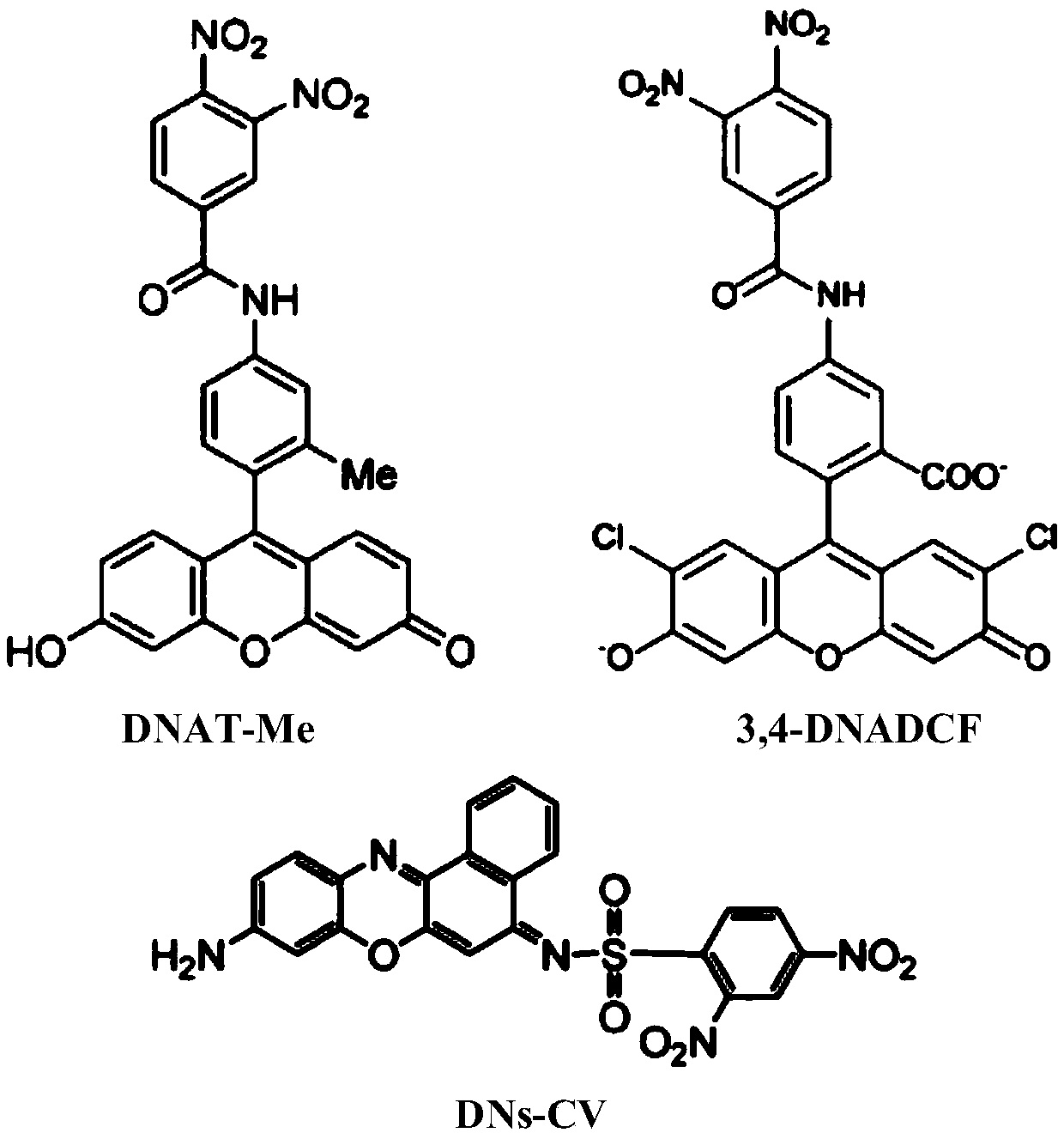Near-infrared fluorescent probe and application thereof in detection of glutathione thiotransferase
A fluorescent probe and glutathione technology, applied in the field of fluorescent probes, can solve the problems of large background noise, difficult in vivo imaging, and unsatisfactory biological penetration, and achieve the effect of easy penetration and reduced impact.
- Summary
- Abstract
- Description
- Claims
- Application Information
AI Technical Summary
Problems solved by technology
Method used
Image
Examples
Embodiment 1
[0023] Example 1 Synthesis of the nitrofluorobenzene compound corresponding to the HCyN recognition group of the probe:
[0024] Add 6.25g (30mmol) of 1,5-difluoro-2,4-dinitrobenzene and 300mL of methanol into a 1000mL three-neck flask, and add 15mL of 10% KOH solution dropwise at 0°C. Start the stirrer, stir at room temperature for 48 hours, filter, wash with water, and dry to obtain 5.45 g of a light yellow solid, which is the nitrofluorobenzene compound corresponding to the HCyN recognition group, with a yield of 84%.
Embodiment 2
[0025] Example 2 Synthesis of nitro compounds with sulfonic acid groups corresponding to the probe HCyN recognition group:
[0026] In a 500mL three-neck flask, add 90mmol of nitrofluorobenzene compound corresponding to HCyN recognition group, 150mL of ethanol, and 20mL of methanol, and heat to obtain a transparent solution. Dissolve 14.22g of sodium sulfite in 105mL of water and add 60mL of ethanol to it to obtain a suspension. The suspension was added to the aforementioned solution, stirred and refluxed at 75° C. for 20 h, the reaction was cooled to room temperature and then spin-dried to obtain a yellow-white solid.
Embodiment 3
[0027] Synthesis of embodiment 3 probe HCyN recognition group:
[0028] Add 5 mmol of the nitro compound with sulfonic acid group corresponding to the HCyN recognition group and 50 mmol of thionyl chloride into a 100 mL three-neck flask, stir at 80° C. for 4 h, and spin dry to obtain the recognition group of the probe HCyN.
PUM
 Login to View More
Login to View More Abstract
Description
Claims
Application Information
 Login to View More
Login to View More - R&D
- Intellectual Property
- Life Sciences
- Materials
- Tech Scout
- Unparalleled Data Quality
- Higher Quality Content
- 60% Fewer Hallucinations
Browse by: Latest US Patents, China's latest patents, Technical Efficacy Thesaurus, Application Domain, Technology Topic, Popular Technical Reports.
© 2025 PatSnap. All rights reserved.Legal|Privacy policy|Modern Slavery Act Transparency Statement|Sitemap|About US| Contact US: help@patsnap.com



